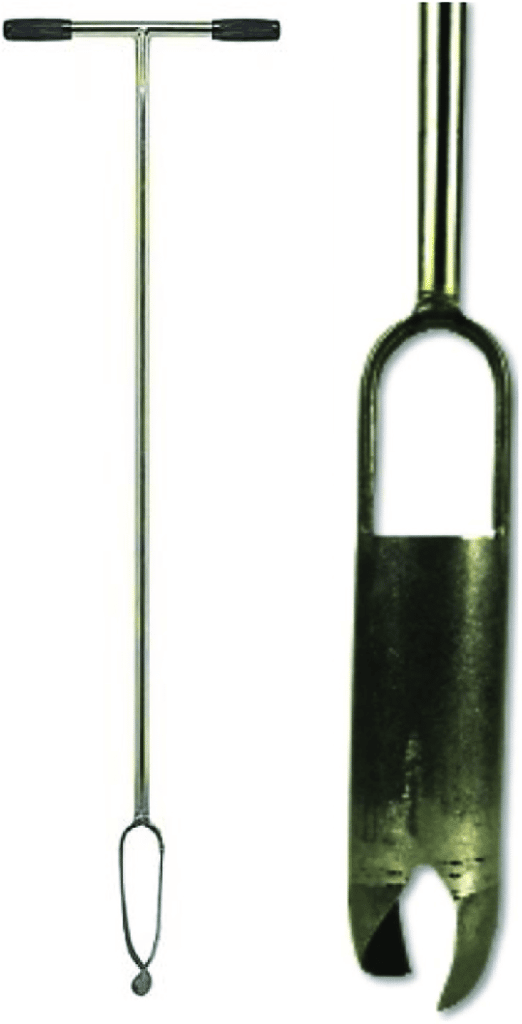Advancing Sustainable Agriculture to Feed Earth’s Growing Population
Feeding a growing global population, sustaining global economic stability, and improving quality of life requires methodologies that effectively manage the interrelated food-energy-water (FEW) systems. Providing sustainable food, water, and energy for 9.7 billion by 2050 in a manner that does not jeopardize the environment is undoubtedly the most thought-provoking challenge of today’s society.
Increased demand for food, water, and energy in the next 30 years will increase the pressure on environmentalists and governments. The demand itself is troubling as climate change exacerbates the pressure on our resources. Storms and other severe weather occurrences increase the chances of disruptions in the food supply chain and energy distribution. Additionally, the land area required to make food production feasible is already in use. The land tat hasn’t been used includes tropical forests and grassland reserves, which sustain biodiversity and ecologically sensitive areas. Adding new land is not an option for increased food supply, therefore increasing the effectiveness and yields in the existing agriculture, and decreasing food waste globally is required to ensure sustainable food production
The Food, Energy, and Water Nexus
Successful FEW projects have a bright future with higher chances of providing effective results while using a transdisciplinary approach. The policies and practices of ecological modernization and sustainable supply chains directly impact the food-energy-water nexus from commercial and industry perspectives. Providing a sustainable supply of F-E-W while considering land-use practices, changing demands in consumer preferences, and climate variability requires the joint involvement of science, engineering, technology, industry, business, and governments.
A transdisciplinary approach investigates a broad range of factors that address sustainability, and provides the most suitable solutions. This approach researches different phenomena based on reductive, reasoned, and detailed studies. For example, the food production capacity increased with the discovery of chemical pesticides and their implementation in agriculture. As discussed in Rachel Carson’s Silent Spring, the enormous ecological costs opened a new perspective for upgrading the U.S. environmental policy. This opens the opportunity for solving problems with global significance. The multi-level structure of the nexus provides opportunities for identifying gaps and addressing ineffective production practices.
FOOD REVIEW
Increasing Agricultural Yields with Reduced Environmental Impacts
Advancement of mechanization and usage of fertilizers, pesticides, plant breeding, and irrigation technology has significantly improved agricultural yields over the past century. Such advances have ensured economic benefit by generating a trade surplus in many countries. Computational science and data analysis provide opportunities for future enhancement and increase yields for the increasing population. For example, imaging sensors can detect and diagnose plant diseases, detect greenhouse gases, and reduce the potential decrease in agricultural productivity. Applications can estimate the appropriate amount of pesticides and other chemicals and minimize agrochemical use without compromising the quality and quantity of the yields. Genetic engineering has proven highly effective in developing crop varieties that provide the highest productivity under the extreme impact of climate change. The resilience and efficacy of agricultural production can be achieved with a deeper understanding of plant genetics, farm management practices, local conditions, and a complex set of sciences that will facilitate these advances.
Reducing Food Waste
The most significant opportunity to stabilize the food supply for the growing population is reducing food waste globally. It is estimated that approximately one-third of all food produced is lost or wasted. Each step of the food chain incurs certain losses such as spills in the field, transportation can cause damages or degradation to food, end consumers tend store food inadequately, or simply throw away their food. In lesser-developed countries, over 85% of food waste occurs before the food reaches end consumers, while approximately 30% of food waste occurs at the consumer level in more-developed countries.
Reducing food loss requires technologies and systems to be implemented throughout the food chain– from harvest, processing, distribution, and storage. For instance, nanotechnology-based protective films can increase the shelf life of various products. Sensors can estimate food quality and could reduce food loss. Last but not least, strategies and plans are needed to inform the end consumers about all risks and damages that food waste causes.
In addition to increasing agricultural yields and reducing food waste, shifting dietary patterns is another effective method for reaching a sustainable food supply. Considering the fact that 14.5% of greenhouse gas emissions are caused by livestock farming, the shift in dietary patterns could reduce the environmental damage and resource burden of feeding the increasing world population. According to World Resources Institute estimations, nutritional changes could provide food for approximately 30% more people with the same area of agricultural land.
WATER REVIEW
Overcoming Water Scarcity
Surface water and groundwater resources that supply ecosystems and the human population are increasingly stressed. it is estimated that global water use will increase by 55% by the year 2055. Freshwater is a limited resource as it makes up only 0.77% of all water on Earth. While these resources remain constant, the distribution is widely impaired in different areas. When water demand exceeds the available water supply, competition for available resources occurs. This is known as water scarcity. Today, we are already facing water scarcity as 2.8 billion people worldwide face water scarcity for at least one month annually. Those who live in water-stressed regions are highly vulnerable to extreme weather events such as droughts and environmental degradation.
Innovations in Water Supply and Increased Efficiency of Water Use
Regions faced with water scarcity have devised ways to create freshwater from seawater through desalination processes. This process involves turning seawater into fresh water through reverse osmosis and distillation. As of 2015, over 18,000 desalination plants have produced nearly 23 billion gallons of freshwater per day. However, these technologies are expensive and energy-intensive, making them unsuitable for widespread solutions. Lower-energy approaches have been tested to provide a suitable alternative to desalination plants. One approach utilizes sunlight to activate a heat-absorbing membrane that is embedded with nanoparticles to distill seawater. This type of innovative technology could provide off-grid desalination at the household or community scale.
Scientists are developing technologies for water supplies through the recovery and reuse of municipal wastewater, stormwater, greywater, and contaminated groundwater. New technologies are looking for solutions to collect wastewater in cities or neighborhoods and treat it for non-potable uses, such as irrigation, street cleaning, fire-fighting, industrial processes, heating and cooling, etc.
Reduced water use is another equally important measure toward achieving water sustainability. Emerging technologies offer a variety of opportunities to increase water use effectiveness. This will provide optimal water use for the growing population and future generations as well. Agriculture would greatly benefit from these techniques as the largest water user globally. For example, engineering solutions in agriculture have utilized including precision irrigation tools, advanced ground-based sensors, and remote sensing data to gauge irrigation needs more precisely.
Redesigning and Revitalizing Water Distribution Systems
In the early and mid 20th century in high-income countries, water treatment and innovation of distribution systems contributed to significant improvements in public health. However, over time, and with the growing populations, these systems have outlived their intended lifespan. Old distribution pipes need restoration and replacement to provide water reliability and efficiently.
ENERGY REVIEW
Providing Clean Energy to Meet Growing Global Demand
The economic growth of countries, increased productivity, and improved living standards are almost entirely dependent on the delivery of energy services. As the population grows, global energy needs are expected to increase. The U.S. Energy Information Administration projects that global energy consumption will grow by 28% between 2015 and 2040. As temperatures rise from the effects of climate change, the global energy demand from air conditioners will triple from 2016 to 2050, leading to the requirement for new electricity capacity equivalent to the capacity of the United States, the European Union, and Japan combined.
Switching to More Sustainable Energy Sources
There are many options for producing energy with little to no carbon dioxide emissions. Solar , wind-based energy, hydropower, waves energy, and geothermal energy are the most promising renewable sources. However, governments and environmentalists have yet to determine the environmental impacts, economic costs, and benefits of renewable energy sources. For instance, wind and solar projects will reduce CO2 emissions, but, their implementation for widespread usage requires land area for installation, additional service roads, and installation of such systems can affect recreational purposes of the environment. Additionally, producing renewable energy components increases the environmental and economic costs.
Finding Ways to Get Energy Where It Is Needed
Advances in production, transmission, and energy storage, combined with reduced costs, renewable energy technologies, and replacing traditional energy sources will provide access to reliable renewable energy supplies worldwide. A promising solution for locally-generated electricity is the usage of renewable “microgrids.” This would provide energy to remote regions that are not connected to conventional power grids through solar panels, wind, or hydropower. Alaska has been the leader in developing microgrids since the 1960s, and today, 70 microgrids contribute about 12% of the renewable energy used globally.
Sources used to create this article:
Food
Anand, G. (2016). Farmers’ unchecked crop burning fuels India’s Air Pollution. The New York Times. Retrieved from https://www.nytimes.com/2016/11/03/world/asia/farmers-unchecked-crop-burning-fuels-indias-air-pollution.html
Conway, G. (2012). One billion hungry can we feed the world? Cornell Univ. Press.
Foley, J., Ramankutty, N., Brauman, K. et al. (2011). Solutions for a cultivated planet. Nature, 478, 337–342. https://doi.org/10.1038/nature10452.
Godfray, H. C., Beddington, J. R., Crute, I. R., Haddad, L., Lawrence, D., Muir, J. F., Pretty, J., Robinson, S., Thomas, S. M., & Toulmin, C. (2010). Food security: the challenge of feeding 9 billion people. Science, 327(5967), 812–818. https://doi.org/10.1126/science.1185383.
Gustavsson, J., Cederberg, C., van Otterdijk, R., & Meybeck, A. (2011). Global food losses and food waste. Food and Agriculture Organization of the United Nations. Retrieved from https://www.fao.org/fileadmin/user_upload/suistainability/pdf/Global_Food_Losses_and_Food_Waste.pdf
Mahlein, A.K. (2016). Plant disease detection by imaging sensors—Parallels and specific demands for precision agriculture and plant phenotyping. Plant Disease, 100(2): 241-251. Retrieved from https://doi.org/10.1094/PDIS-03-15-0340-FE.
National Academies of Sciences, Engineering, and Medicine. (2019). Science breakthroughs to advance food and agricultural research by 2030. The National Academies Press. Retrieved from https://doi.org/10.17226/25059.
National Academies of Sciences, Engineering, and Medicine. (2016). Genetically engineered crops: Experiences and prospects. The National Academies Press. Retrieved from https://doi.org/10.17226/23395.
Ranganathan, J., D. Vennard, R. Waite, P. Dumas, B. Lipinski, & T. Searchinger. (2016). Shifting diets for a sustainable food future. World Resources Institute. Retrieved from https://www.wri.org/research/shifting-diets-sustainable-food-future.
Reddy, V. R., S. K. Singh, & V. Anbumozhi. (2016). Food supply chain disruption due to natural disasters: Entities, risks, and strategies for resilience. Economic Research Institute for ASEAN. Retrieved from https://www.eria.org/ERIA-DP-2016-18.pdf.
Schumann, A. W. (2010). Precise Placement and Variable Rate Fertilizer Application Technologies for Horticultural Crops, HortTechnology, 20(1), 34-40. Retrieved from https://journals.ashs.org/horttech/view/journals/horttech/20/1/article-p34.xml
Water
Gleick, P. H. (1993). Water in crisis: A guide to the world’s fresh water resources. Oxford University Press.
National Academies of Sciences, Engineering, and Medicine. (2016). Using graywater and stormwater to enhance local water supplies: An assessment of risks, costs, and benefits. The National Academies Press. Retrieved from https://doi.org/10.17226/21866.
National Research Council. (2012). Water reuse: Potential for expanding the nation’s water supply through reuse of municipal wastewater. The National Academies Press. Retrieved from https://doi.org/10.17226/13303.
National Research Council. (2008). Desalination: A National Perspective. The National Academies Press. Retrieved from https://doi.org/10.17226/12184.
National Research Council. (2006). Drinking water distribution systems: Assessing and reducing risks. The National Academies Press. Retrieved from https://doi.org/10.17226/11728.
van Dijk, A. I. J. M., Beck, H. E., Crosbie, R. S., de Jeu, R. A. M., Liu, Y. Y., Podger, G. M., Timbal, B., and Viney, N. R. (2013). The Millennium Drought in southeast Australia (2001–2009): Natural and human causes and implications for water resources, ecosystems, economy, and society, Water Resources Research, 49. Retrieved from https://doi.org/10.1002/wrcr.20123.
Energy
International Energy Agency. (2018). The Future of Cooling. IEA. Retrieved from https://www.iea.org/reports/the-future-of-cooling
Koss, G. (2016). Renewable energy: Necessity drives Alaska’s “petri dish” of innovation. E&E News Greenwire. Retrieved from: https://www.eenews.net/articles/necessity-drives-alaskas-petri-dish-of-innovation/.
National Academies of Sciences, Engineering, and Medicine. (2017). Enhancing the Resilience of the Nation’s Electricity System. The National Academies Press. Retrieved from https://doi.org/10.17226/24836.
National Research Council. (2010). Hidden Costs of Energy: Unpriced Consequences of Energy Production and Use. The National Academies Press. Retrieved from https://doi.org/10.17226/12794.
United National Conference on Trade and Development. (2017). The Least Developed Countries Report 2017: Transformational Energy Access. Retrieved from https://unctad.org/system/files/official-document/ldcr2017_en.pdf.
United Nations. (2017). EIA projects 28% increase in world energy use by 2040. Today in Energy. Retrieved from https://www.un.org/sustainabledevelopment/energy/.
U.S. Energy Information Administration. (2018). Petroleum, natural gas, and coal still dominate U.S. energy consumption. Today in Energy. Retrieved from https://www.eia.gov/todayinenergy/detail.php?id=40013#.
Climate
Cutler, D. & Miller, G. (2005). The role of public health improvements in health advances: The 20th century United States. Demography, 42(1), 1-22. Retrieved from https://doi.org/10.1353/dem.2005.0002.
National Academies of Sciences, Engineering, and Medicine. (2016). Attribution of extreme weather events in the context of climate change. The National Academies Press. Retrieved from https://doi.org/10.17226/21852.
Swain, D. L., B. Langenbrunner, J. D. Neelin, and A. Hall. (2018). Increasing precipitation volatility in twenty-first-century California. Nature Climate Change, 8(5). Retrieved from https://doi.org/10.1038/s41558-018-0140-y.
U.S. Global Change Research Program. (2017). Climate science special report: Fourth national climate assessment, Volume I [Wuebbles, D.J., D.W. Fahey, K.A. Hibbard, D.J. Dokken, B.C. Stewart, and T.K. Maycock (eds.)]. U.S. Global Change Research Program. Retrieved from doi: 10.7930/J0J964J6.






